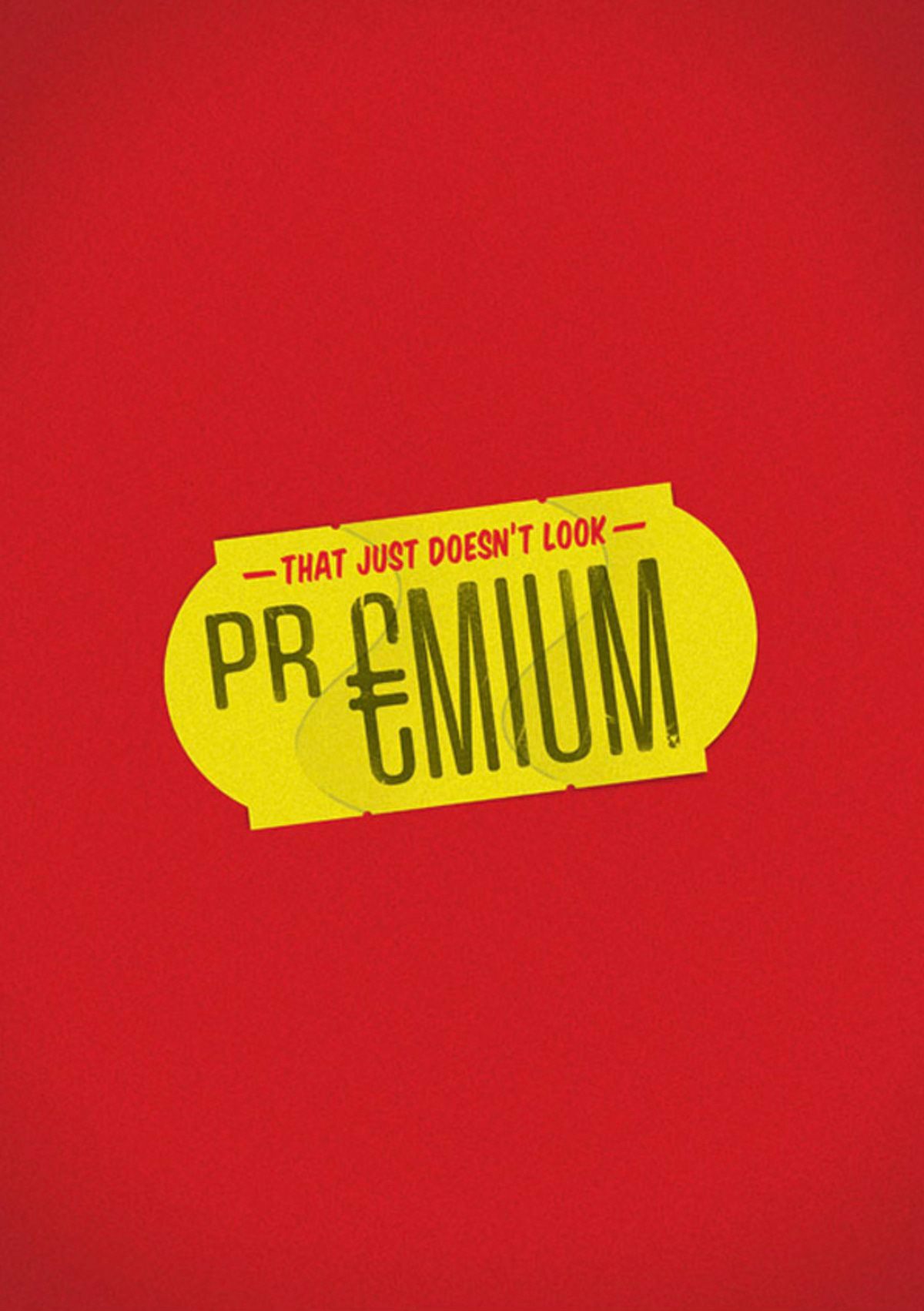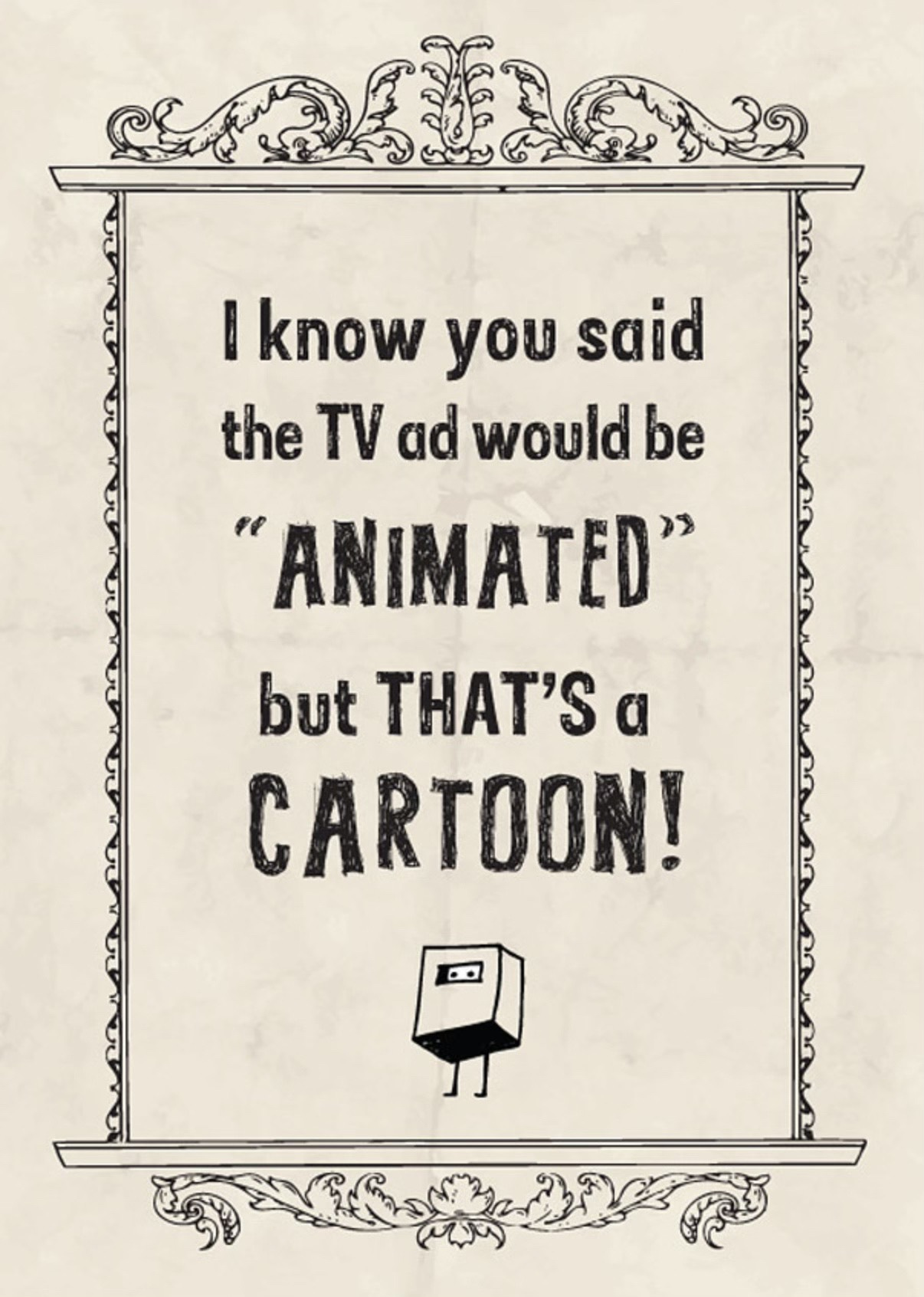Ten Tips on Taking Feedback
Feedback.
Perhaps it’s no coincidence that the word we use to describe receiving notes from a client about a piece of creative work can also be used to describe the ear shattering sound of a howling guitar or an endless loop which leaves you disorientated and unable to locate your true position.
If you operate in a professional creative context outside the arts then you know that making work is only half the story. Certainly as demanding, if not more so, is trying to amend that work to please the people who commissioned it while still preserving its intrinsic creative value.
How good you are at receiving feedback will determine how long, how successful and how fulfilling your creative career is – however much we’d like to pretend that this isn’t so.
So here are ten tips on how to take feedback in a way that will make you the first person your clients want to work with, while also ensuring that you don’t spend the rest of your career feeling like a worthless skivvy at the mercy of an utterly unpredictable and wrathful client god.
Become an Active Listener
Really listening to what someone is saying is tough. Our brains think at four times the speed we process speech, so very often when someone is speaking to us we’re not actually listening; we’re thinking about what we’re going to say in response. If you can train yourself to slow down and actively listen to what your client is saying, without prejudging where they’re heading, you’ll surprise yourself – and them! Become an active listener and pretty soon you’ll be able to hear the subtext of what they’re saying, even if it is buried deep beneath opaque phrases like ‘brand stance’ and ‘mandatory deliverables’. Active listening is a skill. Practise it. Try waiting 3 seconds after someone’s finished talking before you step in. Ask clarifying questions. Nod. Keep Body language open and tilt your head to one side. Oh, and beware too of ‘receiver bias’. Get past the story of what you think you’re hearing - based on your assumptions about your client - and listen to what’s actually being said.
Listening is paying attention with no preconceived ideas. The only goal is to fully and clearly understand what is being transmitted, remaining totally present with what’s being expressed - and allowing it to be what it is.
Rick Rubin
Ask Why?
Your number one A priority job when your client asks you to make a change is to understand why. If they want to try a different opening shot in your rough cut then of course you can do that, it’s not a problem. But before you make the change ask why they’d like you to do it. The best clients understand that you need to know why they’re asking you to amend your work. The rest of them just tell you what they’d like you to do. As soon as you understand the underlying issue they’re trying to resolve then you get a chance to find a solution which keeps them happy, but also, more importantly, allows you to preserve the integrity of your magnum opus. Otherwise …
Show Your Trusted Critic First
When Alfred Hitchcock completed the rough cut of Psycho he showed it to a select group of close friends. They were as one in their praise of a film they felt was nothing short of a masterpiece. Delighted, Hitch then showed the movie to his wife Alma Reville. After the final reel he turned to Alma, readying himself to bask in the warm glow of her approval. Instead she said simply, “You can’t let it go out like that.” On further probing the Master of Suspense learned that Alma had spotted something his friends had either missed or more likely were too intimidated to point out: after the murder of her character Janet Leigh was still visibly breathing. Duly humbled, Alfred made the change. We all need a trusted critic. Maybe your partner. Or a colleague you like and respect. Whoever it is, show the work to them before you show the client. They’ll tell you it like it is. And that’s invaluable.
Be Your Client Before They Arrive
You spent weeks trying to nail this idea. You stayed up all night preparing to pitch it. You’ve just missed your best mate’s birthday fine tuning the final layout. So far this has all been about you. And that’s OK. But in the hour or so before the client shows up take the time to put on their ill-chosen overpriced trainers - metaphorically speaking. Try and see the work from their point of view. Think about their professional and personal agenda. You’ve probably got a pretty good idea of what their concerns are going to be before they show up. If you have your answers ready before the questions come then you’ll be putting yourself at a very favourable advantage. Or, if you find the act of empathy a bit much, get AI to step in. Describe the persona and role of your client to ChatGPT and ask it to critique your work and anticipate the likely challenges to come your way. Dentsu Creative have even created 3 AI clients who will give your creative a good going over.
Read your own work as a stranger would read it, or even better, as an enemy would.
Zadie Smith
Have a Second Pair of Ears
I’m not suggesting plastic surgery (though it would certainly throw the client when they walk into the room). No, I’m encouraging you to have someone with you to listen to the feedback. The main advantage of this is that we hear only what we want or expect to hear, as I’ve discovered to my cost countless times. Everything else seems to float away and pop into nothingness like a soap bubble. Having someone else there minimises the risk of you overlooking some really important detail in the client comments. It also allows one of you to write down the key points while the other person looks the client in the eye. Which brings me on to …
Body Language
Sometimes, as a Creative Director, I’ve been on the other side of the table, I’ve been the one giving notes to a creative or design team. And you’d be surprised how often that conversation can begin with the person you’re talking to sitting back with their arms crossed. It’s only natural if you feel exposed and vulnerable to display a little negative body language. But it’s not going to do you any favours with Mr & Ms Client. So smile, lean forward, nod, be open – though be careful not to overdo this or you’ll come across as a demented weirdo.
Bring it Back to the Brief
This project is, by definition, a commercial one because you have the clients who commissioned it sitting opposite you giving their feedback. So it should have begun with a brief. And if you did your job properly at the outset you made sure you got this brief down to a few clear, simple sentences. Now that brief should be your best friend. Before you show the client the rough cut, or the poster, or the script, recap the brief, remind them of why you’re doing this activity and underscore just how blindingly well you’ve met that objective. If notes come later which you don’t agree with, take it back to the brief and challenge their validity on that basis.
Use the Paraphrase Technique
This is a super simple but effective trick (which not only makes the client feel like they’re really being listened to, but also allows you to get to the heart of what they’re trying to say). You repeat back to them what they’ve just said but with subtly different phrasing, and then you seek confirmation that this is what they mean. For instance if they say about your edit, ‘In the middle it all gets a bit full on and I can’t really tell what’s happening.’ You say, ‘If I’m hearing you right, you feel there are too many quick cuts mid-way and we should have fewer shots?’ And either they’ll say ‘Yes. Exactly’ and feel like you’re an amazing listener, or they’ll give you more detail and clarification. Both scenarios work in your favour.
Always Agree to Make the Changes
Controversial one this. Let me explain what I mean. However daft the client’s suggestion is you should agree to try it, but ONLY once you’ve uncovered the issue they’re trying to resolve (see ‘Ask Why?’). By agreeing to try the change you immediately take the heat out of the situation. They feel reassured that you’re taking them seriously and any potentially adversarial mood dissipates. Once you understand their underlying issue and you’ve shown them their solution you can then use the positive mood of bonhomie and collaboration to show them your solution, and explain why, referring back once again to the brief, yours is the more effective. Plus, you never know, their solution could be a spark of genius. The client isn’t always wrong!
Blocking vs Advisory Feedback
Let’s say you’ve diligently followed all the steps above but you’re still cowering beneath a cascade of client notes. What to do? Well, chances are you’re going to need some time without the client to try and take stock of it all. Before they leave the room, find out which is ‘blocking’ and which is ‘advisory’ feedback – in other words which of their notes have to be acted upon for the project to be approved, and which they’d like you to try but are not essential. This will allow you to use the little remaining time you have to focus on the big stuff. And chances are, once you’ve dealt with the big stuff, they won’t even remember the notes on the small stuff.
So there you have it. Ten hard won lessons in how to take feedback like a pro. Follow these steps and you should have your client eating out of the palm of your hand like a docile chinchilla nibbling creative sunflower seeds.
But if it doesn’t work out, remember, it’s not the end of the world, it really isn’t; they pay the bills so ultimately they get to call the shots; you can always have your director’s cut or your portfolio version and of course, as sure as night follows day, there’s always next time …








